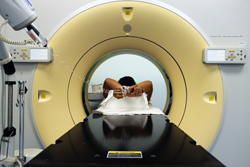Making inroads into pulmonary disease
Although most chronic obstructive pulmonary disease (COPD) patients have both emphysema and airway disease, in some cases only one of the features is present. The 'Markers for emphysema versus airway disease in COPD' (EVA) project aims to identify markers linked specifically to emphysema and airway disease at the DNA, RNA and protein levels. The EU-funded project is working on the hypothesis that the processes leading to these pathologies can be differentiated with regard to inflammatory response and genetic predisposition. Participating clinical centres have to date recruited some 180 cases and 170 healthy controls. Computer tomography (CT) scans are being used to select patients with either emphysema or airway disease. Image analysis will further define emphysema based on density of the lung tissue, and airway disease based on thickness of the airway wall. By plotting airway wall area against lung density, patients can be identified as having emphysema only or airway disease only. Material obtained from lungs and blood will be analysed for elements of gene expression. However, crucial analysis will be performed in a single batch at the end of the study, when all samples have been collected. At that point, DNA, RNA and protein data will be available for cases as well as controls. This will help EVA produce the results required to identify markers specifically associated with emphysema and airway disease sub-phenotypes. As elements of the differential pathogenesis for the different disease processes in COPD, these markers will be extremely useful for diagnosing the sub-phenotypes. Such markers will also provide a basis for exploring targets for new therapeutic approaches to COPD. This will also afford greater opportunities to better manage the disease.







